Landsat 5
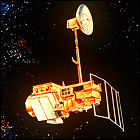 NASA launches Earth resource observation satellite Landsat 5, virtually identical to the Landsat 4 satellite launched in 1982. Like Landsat 4, Landsat 5 is capable of sending real-time data to Earth through the Tracking & Data Relay Satellite (TDRS) system. Landsat 5 becomes the longest-operating Earth observation satellite, outliving its anticipated three-year design life by a factor of ten and not becoming inoperable until 2013; by the time it was shut down, Landsats 7 and 8 had been launched. Among the events Landsat 5 witnessed from orbit were a tsunami that killed nearly a quarter million people along Indonesia’s coastlines in 2004, and the 1986 meltdown of the Chernobyl nuclear reactor in the Soviet Union.
NASA launches Earth resource observation satellite Landsat 5, virtually identical to the Landsat 4 satellite launched in 1982. Like Landsat 4, Landsat 5 is capable of sending real-time data to Earth through the Tracking & Data Relay Satellite (TDRS) system. Landsat 5 becomes the longest-operating Earth observation satellite, outliving its anticipated three-year design life by a factor of ten and not becoming inoperable until 2013; by the time it was shut down, Landsats 7 and 8 had been launched. Among the events Landsat 5 witnessed from orbit were a tsunami that killed nearly a quarter million people along Indonesia’s coastlines in 2004, and the 1986 meltdown of the Chernobyl nuclear reactor in the Soviet Union.
GOES-6 goes up
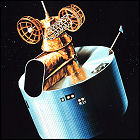 NOAA’s GOES-6 Geostationary Operational Environmental Satellite is launched from Cape Canaveral into a geosynchronous orbit over 135 degrees west longitude on Earth, a position which will change several times over GOES-5’s career until 1988, allowing it to monitor weather over the continental United States and Europe. GOES-5’s primary set of “eyes” will fail in 1989, leaving GOES-7 as the sole working GOES weather satellite until the mid-1990s. Even while “blind”, GOES-5 will serve as a communications relay satellite until its boost to “graveyard” orbit and shutdown in 1992.
NOAA’s GOES-6 Geostationary Operational Environmental Satellite is launched from Cape Canaveral into a geosynchronous orbit over 135 degrees west longitude on Earth, a position which will change several times over GOES-5’s career until 1988, allowing it to monitor weather over the continental United States and Europe. GOES-5’s primary set of “eyes” will fail in 1989, leaving GOES-7 as the sole working GOES weather satellite until the mid-1990s. Even while “blind”, GOES-5 will serve as a communications relay satellite until its boost to “graveyard” orbit and shutdown in 1992.
Exporting the Compact Disc
 For the first time, Compact Disc players and pre-recorded CDs appear in the English-speaking world (having been available in Japan since late 1982. The first label to embrace the new digital format is CBS Records, which publishes 16 existing titles on CD ranging from classical to rock. The technology has been developed jointly by Philips and Sony since the 1970s.
For the first time, Compact Disc players and pre-recorded CDs appear in the English-speaking world (having been available in Japan since late 1982. The first label to embrace the new digital format is CBS Records, which publishes 16 existing titles on CD ranging from classical to rock. The technology has been developed jointly by Philips and Sony since the 1970s.
Landsat 4
 NASA launches Landsat 4, the fourth Landsat Earth resource observation satellite and the first to be redesigned from the ground up (previous Landsats had been based on NASA’s Nimbus satellites from the 1960s and ’70s). For the first time, Landsat data processing and distribution is handled by another government agency, the U.S. Geological Survey, which partners with NASA on all future Landsat satellites. Landsat 4 is the first Landsat to link up to NASA’s TDRS (Tracking & Data Relay Satellite) system, thus enabling real-time data transmission to Earth even when Landsat 4 isn’t passing over a ground station. Landsat 4 remains operational through the end of 1993.
NASA launches Landsat 4, the fourth Landsat Earth resource observation satellite and the first to be redesigned from the ground up (previous Landsats had been based on NASA’s Nimbus satellites from the 1960s and ’70s). For the first time, Landsat data processing and distribution is handled by another government agency, the U.S. Geological Survey, which partners with NASA on all future Landsat satellites. Landsat 4 is the first Landsat to link up to NASA’s TDRS (Tracking & Data Relay Satellite) system, thus enabling real-time data transmission to Earth even when Landsat 4 isn’t passing over a ground station. Landsat 4 remains operational through the end of 1993.
The disappearing moon of Neptune
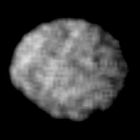 A team of American astronomers discovers what they believe is a third moon of Neptune from ground-based telescope observations, but S/1981N1 isn’t seen again for several years, so the discovery is left in the “unconfirmed” category…until it is next seen by Voyager 2 in 1989, confirming the original sighting many years later. In 1991, the International Astronomical Union will name this moon Larissa. (Voyager 2 photo of Larissa shown)
A team of American astronomers discovers what they believe is a third moon of Neptune from ground-based telescope observations, but S/1981N1 isn’t seen again for several years, so the discovery is left in the “unconfirmed” category…until it is next seen by Voyager 2 in 1989, confirming the original sighting many years later. In 1991, the International Astronomical Union will name this moon Larissa. (Voyager 2 photo of Larissa shown)
GOES-5 goes up
 NOAA’s GOES-5 Geostationary Operational Environmental Satellite is launched from Cape Canaveral into a geosynchronous orbit over 85 degrees west longitude on Earth, a position which will change several times over GOES-5’s career until 1988, allowing it to monitor weather over the continental United States and Europe. GOES-5’s primary set of “eyes” will fail in 1984, forcing NOAA to return GOES-1 and GOES-4 to service until a replacement can be launched in 1987. Its usefulness as a weather satellite at an end, GOES-5 will be boosted into a graveyard orbit in 1990.
NOAA’s GOES-5 Geostationary Operational Environmental Satellite is launched from Cape Canaveral into a geosynchronous orbit over 85 degrees west longitude on Earth, a position which will change several times over GOES-5’s career until 1988, allowing it to monitor weather over the continental United States and Europe. GOES-5’s primary set of “eyes” will fail in 1984, forcing NOAA to return GOES-1 and GOES-4 to service until a replacement can be launched in 1987. Its usefulness as a weather satellite at an end, GOES-5 will be boosted into a graveyard orbit in 1990.
Totable Tornado Observatory
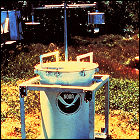 Researchers and storm chasers from the National Weather Service’s Severe Storms Laboratory in Norman, Oklahoma make the first field deployment of the 300-pound TOtable Tornado Observatory (TOTO) instrument package, a modified oil drum filled with meteorological instrumentation which is intended to be placed directly into the path of an oncoming tornado. The first deployment, in north Texas, yields no data – no tornado forms for TOTO to study. Over the next five years, despite several “close calls”, TOTO is never successfully placed in the direct path of a tornado. The TOTO program is discontinued in 1987.
Researchers and storm chasers from the National Weather Service’s Severe Storms Laboratory in Norman, Oklahoma make the first field deployment of the 300-pound TOtable Tornado Observatory (TOTO) instrument package, a modified oil drum filled with meteorological instrumentation which is intended to be placed directly into the path of an oncoming tornado. The first deployment, in north Texas, yields no data – no tornado forms for TOTO to study. Over the next five years, despite several “close calls”, TOTO is never successfully placed in the direct path of a tornado. The TOTO program is discontinued in 1987.
GOES-4 goes up
 NOAA’s GOES-4 Geostationary Operational Environmental Satellite is launched from Cape Canaveral into a geosynchronous orbit over 98 degrees west longitude on Earth, a position which will change several times over GOES-4’s career until 1988, allowing it to monitor weather over the continental United States and Europe. In 1988, GOES-4 will become the first satellite to be boosted into a “graveyard” parking orbit using its remaining propellant, leaving it intact in a higher-than-geostationary orbit to avoid collisions with operational satellites.
NOAA’s GOES-4 Geostationary Operational Environmental Satellite is launched from Cape Canaveral into a geosynchronous orbit over 98 degrees west longitude on Earth, a position which will change several times over GOES-4’s career until 1988, allowing it to monitor weather over the continental United States and Europe. In 1988, GOES-4 will become the first satellite to be boosted into a “graveyard” parking orbit using its remaining propellant, leaving it intact in a higher-than-geostationary orbit to avoid collisions with operational satellites.
The Chicxulub Crater Theory
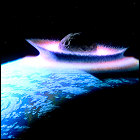 In the journal Science, in an article titled “Extraterrestrial Cause for the Cretaceous-Tertiary Extinction”, Nobel-Prize-winning physicist Luis Alvarez and his son, geologist Walter Alvarez, propose their theory that the 110-mile-wide Chicxulub Crater discovered in the past few decades on the northern tip of the Yucatan Peninsula in Mexico is evidence of a large asteroid collision with Earth, resulting in the widespread death of the dinosaurs 65 million years before the modern day. A contentious peer review of the published theory follows, with many opposing theories proposed, though the Chicxulub hypothesis is eventually accepted as the “smoking gun” that killed the dinosaurs (the theory of an asteroid collision with Earth causing the extinction had been in circulation since the 1950s; the Alvarez theory is the first to point to a specific geological feature as evidence).
In the journal Science, in an article titled “Extraterrestrial Cause for the Cretaceous-Tertiary Extinction”, Nobel-Prize-winning physicist Luis Alvarez and his son, geologist Walter Alvarez, propose their theory that the 110-mile-wide Chicxulub Crater discovered in the past few decades on the northern tip of the Yucatan Peninsula in Mexico is evidence of a large asteroid collision with Earth, resulting in the widespread death of the dinosaurs 65 million years before the modern day. A contentious peer review of the published theory follows, with many opposing theories proposed, though the Chicxulub hypothesis is eventually accepted as the “smoking gun” that killed the dinosaurs (the theory of an asteroid collision with Earth causing the extinction had been in circulation since the 1950s; the Alvarez theory is the first to point to a specific geological feature as evidence).
Mt. St. Helens explodes
 Folllowing a lull in its recent frequent earthquake and minor volcanic activity, the summit of Mt. St. Helens in Washington disappears in a massive landslide, releasing a powerful (300mph) lateral explosion that flattens nearby forest land ahead of a devastating release of debris and snowmelt mud known as a lahar. Within an hour, with the summit crater exposed, the remaining magma stored under Mt. St. Helens surges upward, resulting in a massive eruption from the summit, lasting nine hours and wiping out hundreds of square miles of forest and killing dozens of people, including geologists who had been on station to monitor the volcano’s activity. Following the eruption, Mt. St. Helens is over 1,000 feet shorter, its peak replaced by a mile-wide crater. This is the first significant volcanic eruption on the American mainland since 1915.
Folllowing a lull in its recent frequent earthquake and minor volcanic activity, the summit of Mt. St. Helens in Washington disappears in a massive landslide, releasing a powerful (300mph) lateral explosion that flattens nearby forest land ahead of a devastating release of debris and snowmelt mud known as a lahar. Within an hour, with the summit crater exposed, the remaining magma stored under Mt. St. Helens surges upward, resulting in a massive eruption from the summit, lasting nine hours and wiping out hundreds of square miles of forest and killing dozens of people, including geologists who had been on station to monitor the volcano’s activity. Following the eruption, Mt. St. Helens is over 1,000 feet shorter, its peak replaced by a mile-wide crater. This is the first significant volcanic eruption on the American mainland since 1915.
Mt. St. Helens awakens
 Following eleven days of precursory earthquake activity, Mt. St. Helens, a volcano in Washington which has been dormant for over a century, emits a small eruption of ash and steam. Similar eruptions continue on an hourly basis, though the frequency will gradually diminsh through April. This activity lasts barely a month before ending, at least for a week or two. The north face of Mt. St. Helens begins bulging noticeably, and emergency planners fight to keep sightseers away from the mountain while drawing up evacuation plans for nearby populated areas. Some locals vow to remain despite possible evacuation orders.
Following eleven days of precursory earthquake activity, Mt. St. Helens, a volcano in Washington which has been dormant for over a century, emits a small eruption of ash and steam. Similar eruptions continue on an hourly basis, though the frequency will gradually diminsh through April. This activity lasts barely a month before ending, at least for a week or two. The north face of Mt. St. Helens begins bulging noticeably, and emergency planners fight to keep sightseers away from the mountain while drawing up evacuation plans for nearby populated areas. Some locals vow to remain despite possible evacuation orders.
Solar Maximum Mission
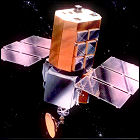 NASA launches the unmanned Solar Maximum Mission satellite atop a Delta 3910 rocket, to study cyclical solar flare activity from Earth orbit. Built by Fairchild and relying on a magnetic reaction wheel system to maintain precise aim at the sun, “Solar Max” suffers malfunctions in orbit, and will be able to carry out only limited observations by November 1980. In 1984, Solar Max will become the first satellite to be repaired in-orbit by a visiting space shuttle crew. After repairs, the satellite will be released, with its life span in orbit having effectively doubled. It will remain in orbit, and functional, through 1989.
NASA launches the unmanned Solar Maximum Mission satellite atop a Delta 3910 rocket, to study cyclical solar flare activity from Earth orbit. Built by Fairchild and relying on a magnetic reaction wheel system to maintain precise aim at the sun, “Solar Max” suffers malfunctions in orbit, and will be able to carry out only limited observations by November 1980. In 1984, Solar Max will become the first satellite to be repaired in-orbit by a visiting space shuttle crew. After repairs, the satellite will be released, with its life span in orbit having effectively doubled. It will remain in orbit, and functional, through 1989.
Flight TE901
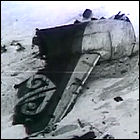 Air New Zealand Flight 901, a sightseeing flight making a round trip to Antarctica and then back to Auckland without landing, is lost with all hands when it crashes into the slopes of Mt. Erebus in Antarctica. Later investigations reveal that the flight crew and passengers were doomed by a typo made during autopilot data entry, switching the plane’s course from a low-altitude flyover of MacMurdo Sound to a low-altitude collision course with the mountain. (Also uncovered are the great lengths taken by Air New Zealand to accuse the crew of incompetence.) The steps taken to uncover the truth mark the birth of modern air disaster investigation, and the end of Antarctic sightseeing flights for at least a decade.
Air New Zealand Flight 901, a sightseeing flight making a round trip to Antarctica and then back to Auckland without landing, is lost with all hands when it crashes into the slopes of Mt. Erebus in Antarctica. Later investigations reveal that the flight crew and passengers were doomed by a typo made during autopilot data entry, switching the plane’s course from a low-altitude flyover of MacMurdo Sound to a low-altitude collision course with the mountain. (Also uncovered are the great lengths taken by Air New Zealand to accuse the crew of incompetence.) The steps taken to uncover the truth mark the birth of modern air disaster investigation, and the end of Antarctic sightseeing flights for at least a decade.
High Energy Astronomy Observatory 3
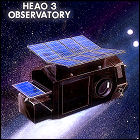 NASA launches the third and final High Energy Astronomy Observatory satellite into Earth orbit, where it begins studying gamma ray sources and the nature of cosmic rays. There is also an experiment package designed to detect heavy atomic nuclei. HEAO-3 will remain in service through May 1981, and it will re-enter Earth’s atmosphere in December of that year.
NASA launches the third and final High Energy Astronomy Observatory satellite into Earth orbit, where it begins studying gamma ray sources and the nature of cosmic rays. There is also an experiment package designed to detect heavy atomic nuclei. HEAO-3 will remain in service through May 1981, and it will re-enter Earth’s atmosphere in December of that year.
Adrastea
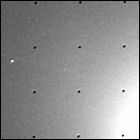 Tiny Adrastea, a small, asteroid-like moon of Jupiter, is discovered in photos returned by Voyager 2 during its flyby of the planet. Adrastea orbits along the outer edge of Jupiter’s ring system, and is likely to be the body from which material for that ring is ejected. Its close orbit carries it around the planet at a speed faster than Jupiter’s rotation, one of the few bodies in the solar system locked into such a fast orbit.
Tiny Adrastea, a small, asteroid-like moon of Jupiter, is discovered in photos returned by Voyager 2 during its flyby of the planet. Adrastea orbits along the outer edge of Jupiter’s ring system, and is likely to be the body from which material for that ring is ejected. Its close orbit carries it around the planet at a speed faster than Jupiter’s rotation, one of the few bodies in the solar system locked into such a fast orbit.
The Compact Disc
 Following five years of research and development, Netherlands-based Philips Electronics demonstrates one of the earliest iterations of the compact audio disc, an optical disc in the now-familiar five-inch size which can be read by a CD player with a laser diode. Philips and Sony, who have been developing the new medium in parallel, will later join forces and create a standard for audio compact discs in 1980, introducing the CD as a consumer product in the early 1980s despite resistance from record companies with a vested interest in vinyl LPs (and only a begrudging acceptance of audio cassettes). In addition to higher audio fidelity and a more durable medium (an optical disc encased in a plastic shell, protecting the physical surface that is so often damaged with vinyl), the CD and its player can also compensate for any damage suffered by the disc through error correction.
Following five years of research and development, Netherlands-based Philips Electronics demonstrates one of the earliest iterations of the compact audio disc, an optical disc in the now-familiar five-inch size which can be read by a CD player with a laser diode. Philips and Sony, who have been developing the new medium in parallel, will later join forces and create a standard for audio compact discs in 1980, introducing the CD as a consumer product in the early 1980s despite resistance from record companies with a vested interest in vinyl LPs (and only a begrudging acceptance of audio cassettes). In addition to higher audio fidelity and a more durable medium (an optical disc encased in a plastic shell, protecting the physical surface that is so often damaged with vinyl), the CD and its player can also compensate for any damage suffered by the disc through error correction.
High Energy Astronomy Observatory 2: Einstein
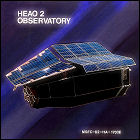 NASA launches the second High Energy Astronomy Observatory satellite, which is given the nickname “Einstein” when it enters service. HEAO-2 is a dedicated X-ray telescope with unprecedented sensitivity and accuracy, and will remain in service through March 1982, re-entering Earth’s atmosphere a week afterward.
NASA launches the second High Energy Astronomy Observatory satellite, which is given the nickname “Einstein” when it enters service. HEAO-2 is a dedicated X-ray telescope with unprecedented sensitivity and accuracy, and will remain in service through March 1982, re-entering Earth’s atmosphere a week afterward.
Nimbus 7
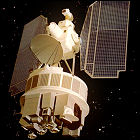 NASA launches the Nimbus 7 satellite, the last of a series of experimental satellites designed to test new weather and climate detection technologies. This satellite tests more precise attitude control systems and instruments designed to monitor the layer of ozone within Earth’s atmosphere. Many of the technologies developed in the Nimbus series are transferred not to future weather satellites, but to future Landsat Earth observation satellites.
NASA launches the Nimbus 7 satellite, the last of a series of experimental satellites designed to test new weather and climate detection technologies. This satellite tests more precise attitude control systems and instruments designed to monitor the layer of ozone within Earth’s atmosphere. Many of the technologies developed in the Nimbus series are transferred not to future weather satellites, but to future Landsat Earth observation satellites.
Charon
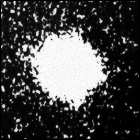 Astronomer James Christy, conducting observations of Pluto at the United States Naval Observatory, discovers a bulging shape present in some photos he’s taken of Pluto, but absent in others. Though the find meets with some skepticism, he has discovered the largest moon of Pluto, Charon, which has a mass of over 50% that of its parent body. Orbiting at only 11,000 miles from Pluto’s surface, Charon has a radius of 750 miles. Within 20 years, closer telescopic examination (including observations using the Hubble Space Telescope) confirm that Charon is separate from Pluto. Since the two bodies are relatively similar in mass, one doesn’t actually orbit the other; rather, they both orbit a center of mass – a barycenter – that lies close to, but not within, Pluto. Further observations in the 21st century lead to the unexpected discovery of four further satellites of Pluto.
Astronomer James Christy, conducting observations of Pluto at the United States Naval Observatory, discovers a bulging shape present in some photos he’s taken of Pluto, but absent in others. Though the find meets with some skepticism, he has discovered the largest moon of Pluto, Charon, which has a mass of over 50% that of its parent body. Orbiting at only 11,000 miles from Pluto’s surface, Charon has a radius of 750 miles. Within 20 years, closer telescopic examination (including observations using the Hubble Space Telescope) confirm that Charon is separate from Pluto. Since the two bodies are relatively similar in mass, one doesn’t actually orbit the other; rather, they both orbit a center of mass – a barycenter – that lies close to, but not within, Pluto. Further observations in the 21st century lead to the unexpected discovery of four further satellites of Pluto.
GOES-3 goes up
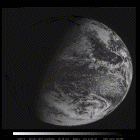 NOAA’s GOES-3 Geostationary Operational Environmental Satellite is launched from Cape Canaveral into a geosynchronous orbit over the Indian Ocean, replacing the first operational GOES satellite, GOES-1. GOES-3 will serve as a working weather satellite for over a decade, ultimately decommissioned from that role in 1989 and then serving as a communications satellite for the Pacific Ocean region and Antarctica, a role it continues to fill over 35 years later.
NOAA’s GOES-3 Geostationary Operational Environmental Satellite is launched from Cape Canaveral into a geosynchronous orbit over the Indian Ocean, replacing the first operational GOES satellite, GOES-1. GOES-3 will serve as a working weather satellite for over a decade, ultimately decommissioned from that role in 1989 and then serving as a communications satellite for the Pacific Ocean region and Antarctica, a role it continues to fill over 35 years later.
Landsat 3
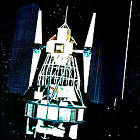 NASA launches Landsat 3, the latest in a constellation of satellites derived from the design of the experimental Nimbus weather satellites. This is the last Landsat to use the Nimbus framework, and the last to be managed exclusively by NASA; Landsat 3 remains in service through 1983.
NASA launches Landsat 3, the latest in a constellation of satellites derived from the design of the experimental Nimbus weather satellites. This is the last Landsat to use the Nimbus framework, and the last to be managed exclusively by NASA; Landsat 3 remains in service through 1983.
NAVSTAR-1
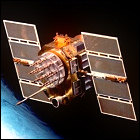 The U.S. Air Force launches NAVSTAR-1, the first of a planned constellation of experimental satellites supporting the Department of Defense’s Global Positioning System project. Envisioned as a network of satellites providing extremely accurate location data for military purposes, the Global Positioning System will later grow to service civilian customers as well. Three other NAVSTAR satellites are launched in 1978 alone, and later satellites in the original NAVSTAR series will be launched betwen 1980 and 1985. Unlike the later, more advanced NAVSTAR II satellites of the 1990s, data from the original NAVSTAR constellation is restricted to the American military.
The U.S. Air Force launches NAVSTAR-1, the first of a planned constellation of experimental satellites supporting the Department of Defense’s Global Positioning System project. Envisioned as a network of satellites providing extremely accurate location data for military purposes, the Global Positioning System will later grow to service civilian customers as well. Three other NAVSTAR satellites are launched in 1978 alone, and later satellites in the original NAVSTAR series will be launched betwen 1980 and 1985. Unlike the later, more advanced NAVSTAR II satellites of the 1990s, data from the original NAVSTAR constellation is restricted to the American military.
“A threat of disaster” in Antarctica
 British glaciologist John H. Mercer publishes a report in Nature postulating that continued growth of fossil fuel use could lead to a runaway carbon dioxide greenhouse effect in Earth’s atmosphere, with the glaciers of western Antarctica particularly vulnerable to rising temperatures of both air and water. The glacial melting, Mercer says, could be rapid and catastrophic, leading to as much as a five-meter rise of global sea levels by 2028, putting “low-lying areas such as much of Florida and the Netherlands” underwater. Though initially treated as a “worst case scenario”, Mercer’s theory will gain traction as global ocean temperatures rise (and as glacial melting picks up speed in Antarctica) in the early 21st century, ultimately becoming the predominant theoretical timeline for sea level rise and gaining an informal name: the “John Mercer effect”.
British glaciologist John H. Mercer publishes a report in Nature postulating that continued growth of fossil fuel use could lead to a runaway carbon dioxide greenhouse effect in Earth’s atmosphere, with the glaciers of western Antarctica particularly vulnerable to rising temperatures of both air and water. The glacial melting, Mercer says, could be rapid and catastrophic, leading to as much as a five-meter rise of global sea levels by 2028, putting “low-lying areas such as much of Florida and the Netherlands” underwater. Though initially treated as a “worst case scenario”, Mercer’s theory will gain traction as global ocean temperatures rise (and as glacial melting picks up speed in Antarctica) in the early 21st century, ultimately becoming the predominant theoretical timeline for sea level rise and gaining an informal name: the “John Mercer effect”.
While you were out: 6EQUJ5 called
 Radio astronomers at Ohio State University observe a signal from the direction of the constellation Sagittarius that seems to jump out from the usual cosmic background noise. The 72-second signal is quickly dubbed the “Wow Signal” (thanks to a hastily scribbled note), and is considered by some to be a strong candidate for a message from an extraterrestrial civilization since its frequency falls almost exactly on the hydrogen line of the electromagnetic spectrum, a wavelength closely watched by the SETI program. But more powerful telescopes listening in on the same region of space in the years and decades to come pick up no further signals. Scientists involved in the initial analysis later admit that the “message” may be of Earthly origin, reflected back from an object in space.
Radio astronomers at Ohio State University observe a signal from the direction of the constellation Sagittarius that seems to jump out from the usual cosmic background noise. The 72-second signal is quickly dubbed the “Wow Signal” (thanks to a hastily scribbled note), and is considered by some to be a strong candidate for a message from an extraterrestrial civilization since its frequency falls almost exactly on the hydrogen line of the electromagnetic spectrum, a wavelength closely watched by the SETI program. But more powerful telescopes listening in on the same region of space in the years and decades to come pick up no further signals. Scientists involved in the initial analysis later admit that the “message” may be of Earthly origin, reflected back from an object in space.
High Energy Astronomy Observatory
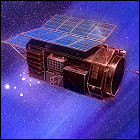 NASA launches the first High Energy Astronomy Observatory satellite in Earth orbit, continuing the survey of the sky with sensitive detectors designed to find gamma ray and X-ray sources. HEAO-1 will remain in service through January 1979, and will re-enter Earth’s atmosphere in March 1979.
NASA launches the first High Energy Astronomy Observatory satellite in Earth orbit, continuing the survey of the sky with sensitive detectors designed to find gamma ray and X-ray sources. HEAO-1 will remain in service through January 1979, and will re-enter Earth’s atmosphere in March 1979.
GOES-2 goes up
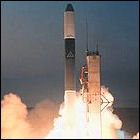 The second in a new generation of geosynchronous weather satellites is launched for the National Oceanic & Atmospheric Administration, GOES-2. An acronym for Geostationary Operational Environmental Satellite, GOES-2 is initially positioned at a point over 60 degrees west longitude on Earth, though it will be repositioned several times in its career as a weather satellite. In 1993, it will cease weather monitoring operations and will act chiefly as a communications satellite serving islands in the Pacific Ocean, as well as manned research facilities in Antarctica. GOES-2 will serve that function through 2001.
The second in a new generation of geosynchronous weather satellites is launched for the National Oceanic & Atmospheric Administration, GOES-2. An acronym for Geostationary Operational Environmental Satellite, GOES-2 is initially positioned at a point over 60 degrees west longitude on Earth, though it will be repositioned several times in its career as a weather satellite. In 1993, it will cease weather monitoring operations and will act chiefly as a communications satellite serving islands in the Pacific Ocean, as well as manned research facilities in Antarctica. GOES-2 will serve that function through 2001.
The Rings of Uranus
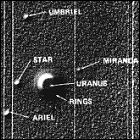 A team of MIT astronomers, flying in a plane modified to serve as an airborne high-altitude telescope, plans to observe the planet Uranus as it eclipses, or “occults”, a star. But the team observes more occultations than expected both before and after the planet itself passes in front of the star. The inevitable conclusion is that Uranus has rings, made of material too dark to be detected by existing Earthbound telescopes. Further observations are given top priority: NASA’s Voyager 2 space probe, due to lift off later in 1977, may last long enough to reach Uranus, and the newly discovered rings must be taken into account when planning its flyby trajectory.
A team of MIT astronomers, flying in a plane modified to serve as an airborne high-altitude telescope, plans to observe the planet Uranus as it eclipses, or “occults”, a star. But the team observes more occultations than expected both before and after the planet itself passes in front of the star. The inevitable conclusion is that Uranus has rings, made of material too dark to be detected by existing Earthbound telescopes. Further observations are given top priority: NASA’s Voyager 2 space probe, due to lift off later in 1977, may last long enough to reach Uranus, and the newly discovered rings must be taken into account when planning its flyby trajectory.
The man who hustles stars
 The premiere installment of the five-minute astronomy series Jack Horkheimer: Star Hustler marks the beginning of the show’s four-decade run on PBS. Hosted by Jack Horkheimer, director of the Miami Space Transit Planetarium, the show initially airs only on Florida’s PBS channel, and will not enter national syndication to other PBS outlets until 1985. It is often the last thing to air before sign-off, as Horkheimer encourages viewers to step outside and stargaze after the show is over. Horkheimer will host the series until his death in 2010.
The premiere installment of the five-minute astronomy series Jack Horkheimer: Star Hustler marks the beginning of the show’s four-decade run on PBS. Hosted by Jack Horkheimer, director of the Miami Space Transit Planetarium, the show initially airs only on Florida’s PBS channel, and will not enter national syndication to other PBS outlets until 1985. It is often the last thing to air before sign-off, as Horkheimer encourages viewers to step outside and stargaze after the show is over. Horkheimer will host the series until his death in 2010.
NOAA-5
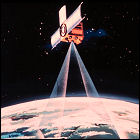 NASA and the National Oceanic & Atmospheric Administration launch NOAA-5, a weather satellite intended to operate in a near-polar low Earth orbit. Within two weeks of its launch, NOAA-5 proves instrumental in tracking Hurricane Belle, a category 1 hurricane, as it approaches and makes landfall in the northeastern United States. NOAA-5 will operate without any major malfunctions through July 1979.
NASA and the National Oceanic & Atmospheric Administration launch NOAA-5, a weather satellite intended to operate in a near-polar low Earth orbit. Within two weeks of its launch, NOAA-5 proves instrumental in tracking Hurricane Belle, a category 1 hurricane, as it approaches and makes landfall in the northeastern United States. NOAA-5 will operate without any major malfunctions through July 1979.
GOES-1 goes up
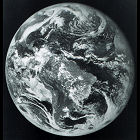 The first in a new generation of weather satellites operating in geosynchronous orbit for the National Oceanic & Atmospheric Administration, GOES-1, is launched from Cape Canaveral. An acronym for Geostationary Operational Environmental Satellite, GOES-1 is positioned over the Indian Ocean, where it is expected to become but the first in a constellation of weather satellites monitoring Earth’s atmosphere in both visible and infrared light. In 1978, GOES-1 will be repositioned over the Pacific Ocean, which it will monitor until it is decommissioned in 1985, after almost ten full years of operation.
The first in a new generation of weather satellites operating in geosynchronous orbit for the National Oceanic & Atmospheric Administration, GOES-1, is launched from Cape Canaveral. An acronym for Geostationary Operational Environmental Satellite, GOES-1 is positioned over the Indian Ocean, where it is expected to become but the first in a constellation of weather satellites monitoring Earth’s atmosphere in both visible and infrared light. In 1978, GOES-1 will be repositioned over the Pacific Ocean, which it will monitor until it is decommissioned in 1985, after almost ten full years of operation.